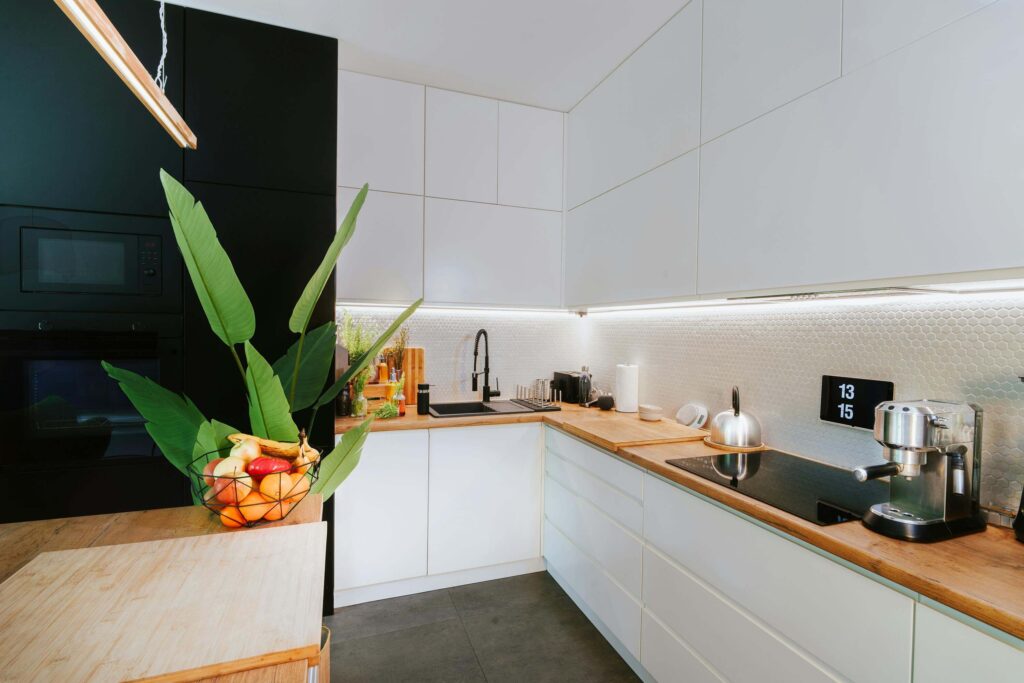Have you ever noticed how your smart speaker always seems to understand you a little better each year? Or how your robot vacuum now avoids cables it used to choke on? That’s not just a software update—it’s a glimpse into the quietly unfolding revolution inside your home.
Your home isn’t dumb anymore. And it’s not just smart. It’s learning.
The truth is, the rise of domestic robotics in 2025 isn’t a sci-fi dream—it’s happening right now. From machines that fold your laundry to AI-driven fridges that reorder groceries, your house is slowly becoming the most intelligent (and obedient) member of your family.
You’re Not Lazy. You’re Optimized.
Here’s the trick: these gadgets aren’t designed to make you lazy—they’re designed to make your routines frictionless. Domestic robotics isn’t about turning your house into a spaceship; it’s about making your life feel like there’s always someone just out of sight who already knows what you want.
Want your coffee ready by 7 a.m.? Your smart kitchen can handle it. Can’t remember if you locked the door? Your AI assistant already double-checked. Can’t reach that high shelf? Your robot butler (yes, they exist now) has you covered.
And it’s not random. It’s design with intent—like the layout of a mall or cereal placement on grocery store shelves. These machines are meant to change your behavior subtly by anticipating it.
The Robots Are Coming… Quietly
Remember when robot vacuums were clunky Roombas that bumped into furniture and scared pets? Today’s models, like the Roborock S8 MaxV Ultra, map your home with LiDAR, recognize objects, and even respond to voice commands.
That’s domestic robotics at work. And vacuums are just the beginning.
There are AI-driven mops that know which rooms need more scrubbing. Dishwashers that scan dishes to adjust water pressure. Folding robots like FoldiMate (still in development, but close) promise to end laundry fatigue forever. And robotic window cleaners scale glass panes like mechanical spiders.
It’s not that you can’t do these things yourself. But why would you?
Your Home, the Predictive Engine
Imagine this: You come home at sunset. Lights adjust to your mood. The air purifier kicks in because pollen counts are high. Your couch reclines automatically because your smart watch sensed stress during your commute. That’s not overkill—it’s orchestration.
Systems like Samsung’s SmartThings or Amazon Alexa-compatible ecosystems let you stitch together dozens of gadgets into one brain. And when layered with AI, that brain starts to learn.
We’re seeing the rise of domestic robotics not as isolated machines, but as members of a highly coordinated domestic network that understands patterns, routines, even mood. It’s the smart home as a predictive, almost sentient partner.
The Price of Convenience
Of course, there’s a tradeoff.
Domestic robotics often comes bundled with privacy concerns. Your home is now full of cameras, microphones, sensors—watching and learning. You’re not paranoid; these devices are always listening, and the data they collect can be sold, shared, or hacked.
Regulations are catching up, but for now, convenience sometimes comes with compromise. Products like Apple’s HomeKit are making strides in privacy-first automation, encrypting data locally, and minimizing cloud dependencies.
But the tension remains: Do you want a home that knows you—or one that remembers everything about you?
Aging in Place with Robotics
One of the most important benefits of domestic robotics in 2025 is in elder care.
Robots like ElliQ, a social companion for older adults, offer medication reminders, video calls, and conversation—all aimed at reducing loneliness and improving quality of life. Mobility aids are becoming robotic exoskeletons, and fall detection now includes predictive algorithms rather than simple impact sensors.
Domestic robotics is redefining what “aging in place” really means. It’s not just staying in your home—it’s being supported there, actively, by machines that care in their own code-driven way.
The Next Five Years
Looking ahead, we’ll likely see domestic robotics evolve from individual tools to an integrated home workforce. Think multi-function robots that cook, clean, and offer security. We’ll see more voice-free interaction—robots that read facial expressions and body language to understand your needs.
There’s even talk of emotional AI. Not just robots that respond, but ones that empathize.
Is it weird? Absolutely. Is it coming? Faster than you think.
In 2025, your home isn’t just smart—it’s alive in its own mechanical way. Domestic robotics is reshaping daily life, transforming chores into background processes, and turning houses into responsive, adaptive spaces.
You didn’t ask for a robot army. But they’re already moving in.
The only question now: What’s your home going to do next? Let us know your thoughts in the comment below.


